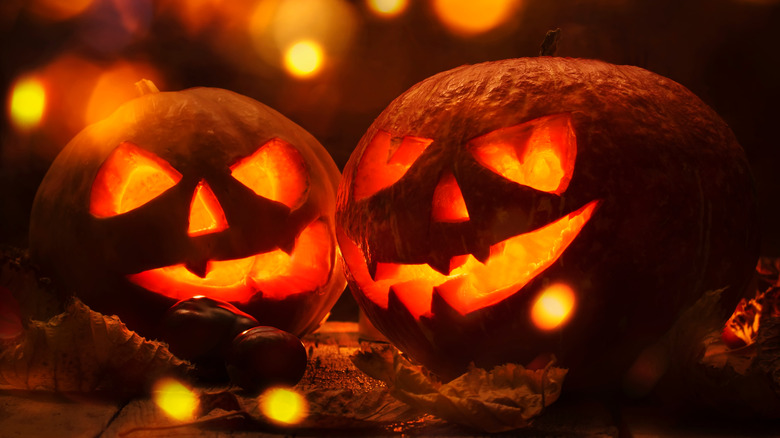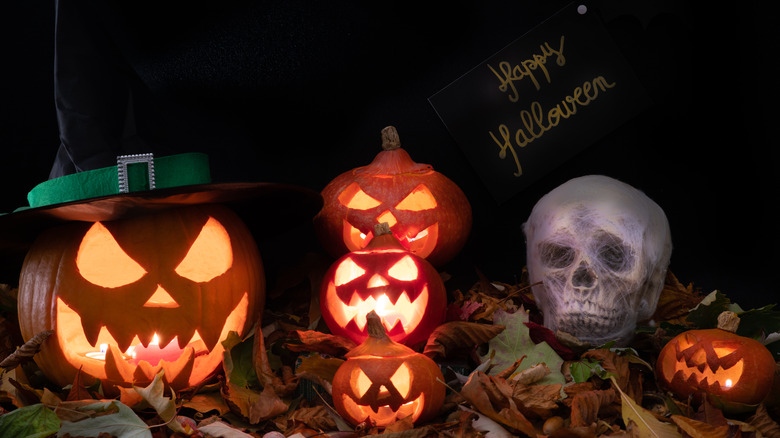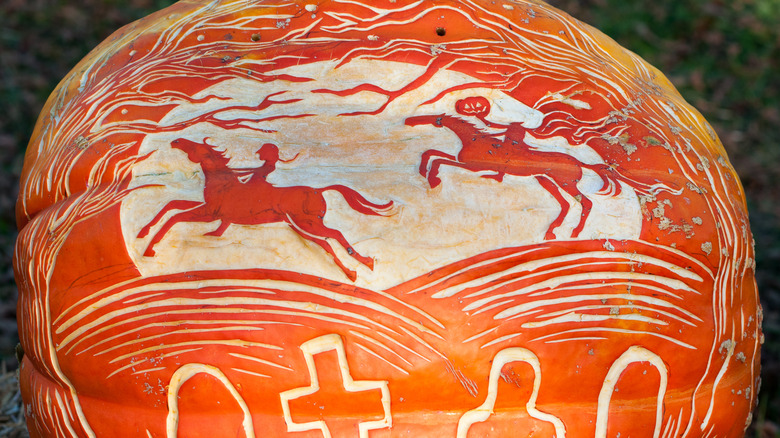Inside The Jack-O'-Lantern's Devilish Origin Story
Holidays bring some rather interesting traditions that are so embedded into society that they often go unquestioned in the 21st century. This is especially true for countries with lengthy histories of immigration, such as the United States. As a cultural melting pot, holidays in the U.S. can look different from place to place, family to family. Some holidays don't even reach the entirety of the country.
When we do stop and think about why we do the things that we do for holidays, quite a few questions come up that make some of even the most beloved traditions sound strange. Take Halloween, for instance. What is it about the month of October that makes us watch scary movies and decorate our houses with all things creepy? Why do we carve images into pumpkins every autumn? Turns out, these traditions date back centuries, and many of them have truly unsettling origins.
Jack-o'-Lanterns stem from an Irish Myth
Though Ireland is a small country relative to other influential locations around the world, its culture has spread far beyond the island itself. St. Patrick's Day, for example, is celebrated internationally every March. However, this is not the only holiday on which the Green Isle has left its mark.
History explains the Irish myth of "Stingy Jack." He invited the devil to have a drink with him, but being stingy, he did not want to pay for it. He asked the devil to turn himself into a coin to pay for the drinks. When he did so, Jack kept the money. He later freed the devil on the condition that the devil could not claim his soul when he died. When he did die, God did not want him in heaven, but the devil kept his promise and did not bring Jack to hell. He gave Jack some burning coal and sent him away. Jack put the coal into a hollowed-out turnip and remained on earth with his makeshift lantern. The Irish began to call him "Jack of the Lantern," which evolved to "Jack O'Lantern."
The Legend of Sleepy Hollow added to pumpkin popularity
The Irish were keen to keep Jack's spirit away from their homes, so they began carving scary faces into turnips of their own (per History). Pumpkins gained popularity and became attached to spooky themes due to "The Legend of Sleepy Hollow," wherein the Headless Horseman throws a pumpkin at Ichabod Crane. Around the time that this story was published, the Irish began immigrating to the United States. They found pumpkins to be perfect for carving as they carried on their tradition of warding off spirits like "Stingy Jack" (per National Geographic).
Carving faces into vegetables (though pumpkins are actually in the fruit family) could predate the legend of "Stingy Jack," however. The Big Blog of Gardening explains that Celts once believed that ghosts and spirits made earthly visits on the last night of October. They lit bonfires and eventually began carving faces into turnips and beets with candles to illuminate the faces and keep the spirits at bay. Ancient Celtic people also saw autumn as a boundary between the living and the dead, thus adding to the season's association with death, ghosts, and evil spirits.


